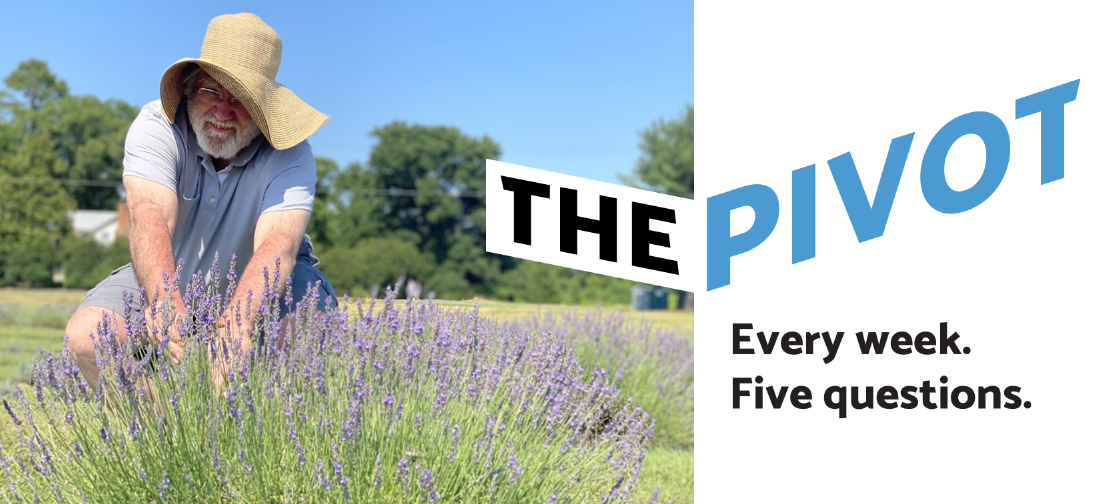The Pivot: Dr. Martin Kohlmeier
Dr. Martin Kohlmeier sees what molecules mean for whole people.

What’s your role in public health?
I am a professor of nutrition and principal investigator at the UNC Nutrition Research Institute in Kannapolis, North Carolina.

Can you describe your focus area in one sentence?
I work on precision nutrition — meaning I look at how a person’s unique characteristics, especially their genes and microbiome, affect their response to different nutrients, and how to use that information to prevent or treat disease.
That last part, putting the information to work, is actually the hardest. For one, we have an emotional relationship to food, and I’m not a psychologist! Genetics is easy by comparison. There are so many steps involved in translating this research and bringing it to people.
For example, you can say, “Eat five fruits and vegetables per day,” and that is a valuable message; but it treats everyone the same.
This morning, I was reading about how the government of the United Kingdom started an experiment providing fresh fruits and vegetables. This is great, but I’m also thinking about the fact that we now have data that people of color, who often cannot digest lactose well, also do not benefit as much from the nutrients in fruit. In fact, eating things like blueberries is twice as effective for people who have lactase as those who don’t.
This seems likely to create an inequitable effect, especially when you consider that the ability to digest lactose is highly correlated to skin tone. In Thailand, there is a 98% probability an adult will not be able to digest lactose. Policy may not be able to address needs in a way that’s tailored to the individual, but we’re getting to the point where it can work for groups.
Another example is the relationship between latitude and vitamin D deficiency. We get most of our vitamin D from exposure to ultraviolet radiation from the sun, but the average levels of exposure are very different, for example, in New York and Florida.
This is important because, for example, there is evidence that vitamin D deficiency is a risk factor for severe outcomes from SARS-CoV-2 infection and may help explain the eight-fold difference in COVID-19 mortality between the northern and southern United States in 2020.

What brought you to public health?
It was excitement about the ability to bring molecular science into practice in a concrete way. I wanted to move beyond bare findings on a molecular level to implementation at the human, individual and group levels.
I’m very much a proponent of nutrition as a hard science. It’s as good as physics, biology, etc., and it’s provable. We have all the tools, and we can demonstrate cause and effect.

Can you describe a time where you have pivoted in your public health career?
We all pivot all the time. I think the decisive pivot happened early in my training. When I went to medical school, I originally intended to do biochemistry, and I really saw myself as a bench scientist. I was still doing this bench science through medical school, when my clinical experience really redirected me toward practical application, including in public health.
It seemed obvious to me that you don’t stop halfway by just looking at molecules. As a basic scientist, having the chance to work directly with people really put things in perspective, and it created a tension that helped focus my research.
I love molecules and how they swing, but since that time I’m aware of what molecules mean for whole people.

Who are you when you’re at home?
I enjoy a lot of gardening and being able to shed everything else while I’m at it. I’m trying to get more exercise, particularly outdoors. I used to play tennis and sail, but recently my activity has been mostly channeled into walking and hiking. I really like physical movement.
Read more interviews in The Pivot series.
Published: 12/12/2022

